
Redditor Reveals How Engineers Made Use Of "Chicken Gun" To Fire Bird Carcasses At Aircraft Components Just To Test Plane Safety
Chicken Gun? I'm just as surprised as you are
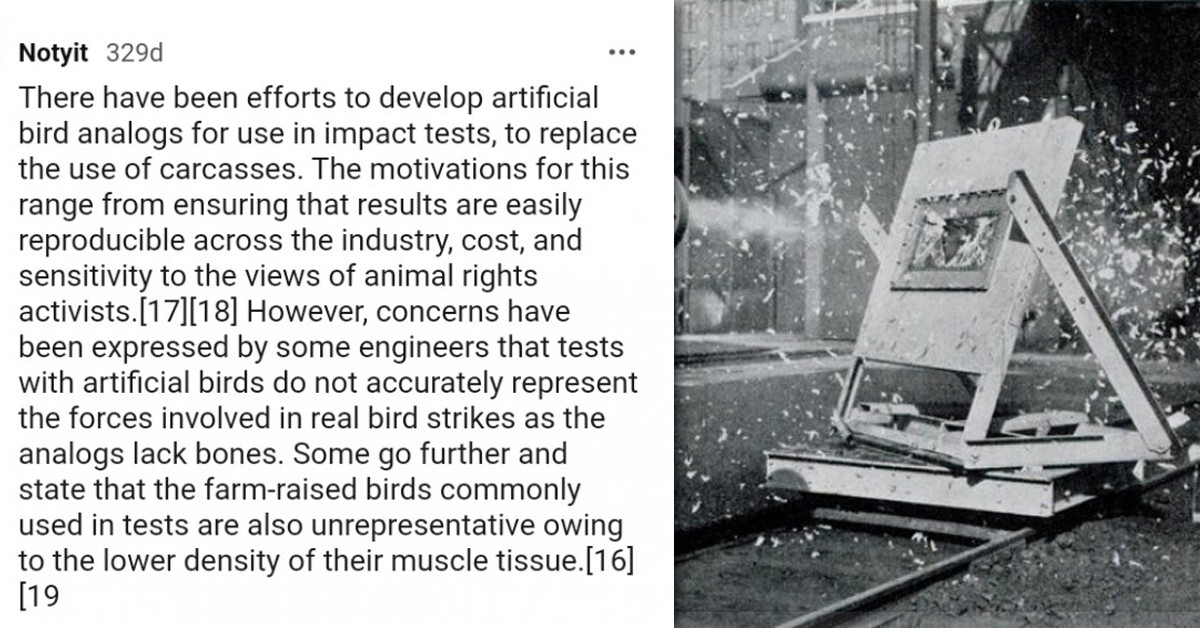
A large-diameter compressed-air gun known as a "chicken gun" or "flight impact simulator" is used to shoot bird corpses at aircraft parts in order to imitate high-speed bird hits while the aircraft is in flight. The most frequent targets in such testing are jet engines and airplane windshields because they are particularly susceptible to damage from such attacks.
Although several bird species are employed in the testing and certification of airplanes, the gadget earned the nickname "chicken gun" since chickens are the most frequently utilized "ammunition" due to their easy accessibility. The US Civil Aeronautics Administration and the Westinghouse Electric and Manufacturing Company collaborated to create the first chicken cannon in 1942.
It was created by Westinghouse's High Power Laboratory in Pittsburgh and had a muzzle velocity of up to 270 mph (430 km/h), although it could fire bird corpses at a maximum speed of 400 mph (640 km/h). The gun's propellant was compressed air, which was stored in an accumulator by a compressor until the appropriate pressure was attained.
An electric quick-release valve was opened by an operator to fire the gun, releasing compressed air into the barrel. It was possible to achieve various muzzle velocities by adjusting the pressure that was kept in the accumulator.
Up until November 1943, the gun was in operation at the High Power Laboratory. It was relocated to the Indianapolis Experimental Station, a CAA research and development facility in Indianapolis, in early 1945.
Redditor u/Urisk has shared an interesting piece of information with the TodayILearned subreddit community
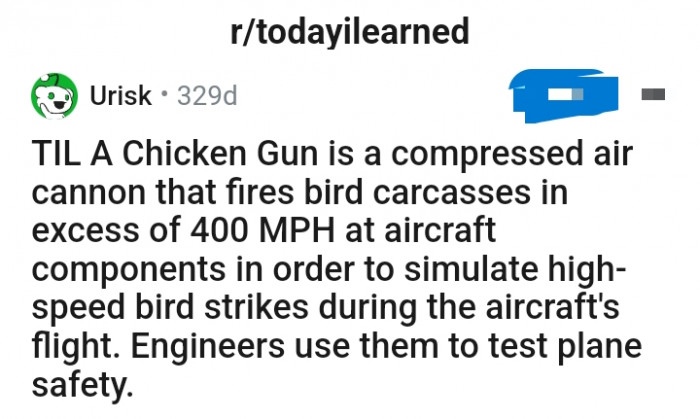 Reddit
Reddit
A Chicken Gun is a compressed air cannon that fires bird carcasses
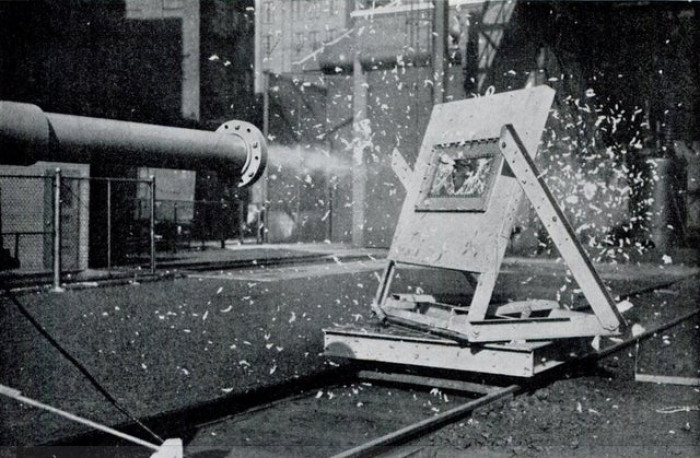 Wikipedia
Wikipedia
There, it was used to test parts for a number of commercial aircraft manufacturers before being retired sometime in 1947. The De Havilland Aircraft Company in the United Kingdom independently created a similar gun in the middle of the 1950s.
Here are what redditors had to say:
World war 3 and World war 4
 Reddit
Reddit
Thawing the chickens
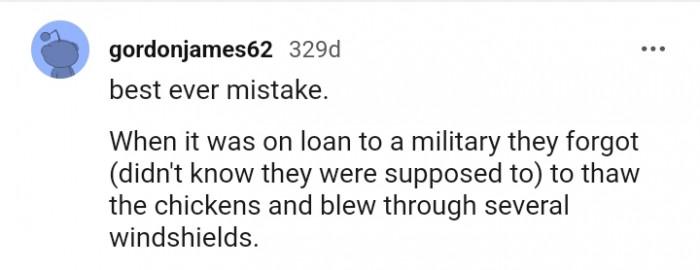 Reddit
RedditThe royal Canadian airfarce
 Reddit
Reddit
Planes are not vegetarian
 Reddit
Reddit
The best today I learned of the week
 Reddit
Reddit
It does say bird carcasses
 Reddit
RedditThey fire freshly killed chicken
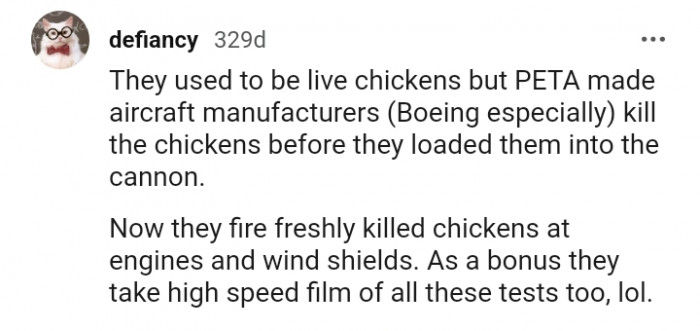 Reddit
Reddit
They never found some kind of reusable replacement
 Reddit
RedditIt is called the chicken cannon
 Reddit
Reddit
A myth busters episode
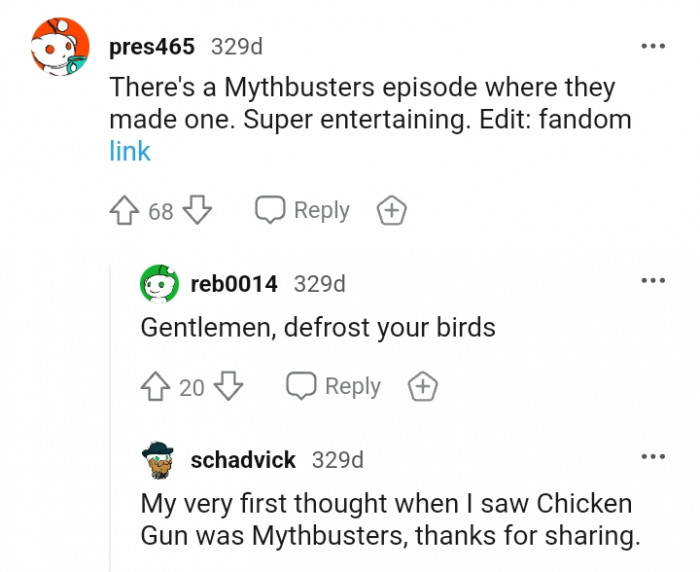 Reddit
RedditWhat they also fire
 Reddit
Reddit
They put the jet engine on the test
 Reddit
Reddit
Artificial bird analogs for use in impact tests
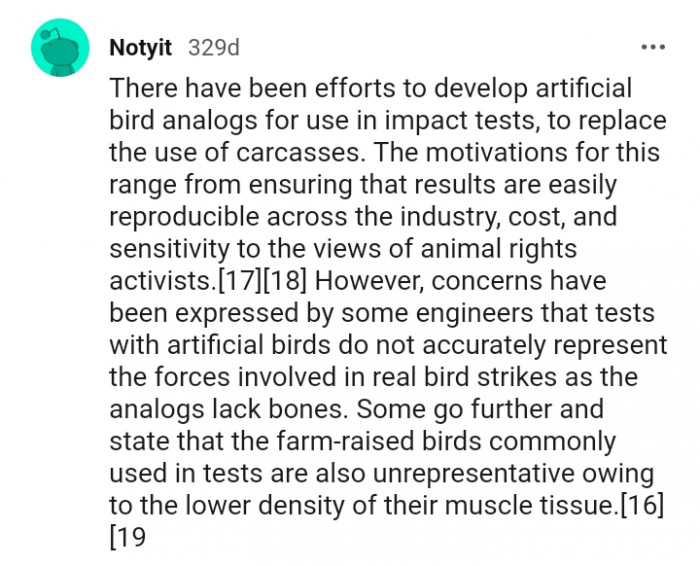 Reddit
Reddit
Engineers uses them for safety
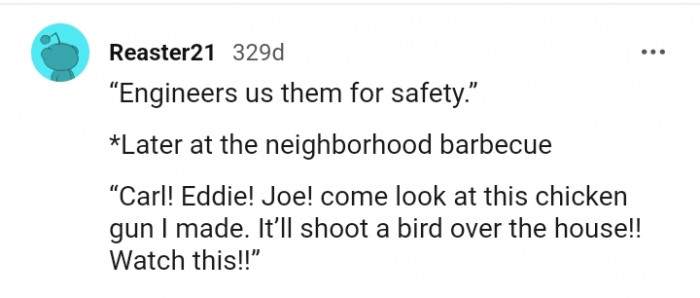 Reddit
Reddit
Here is the step one
 Reddit
Reddit
Using defrosted chickens for these tests
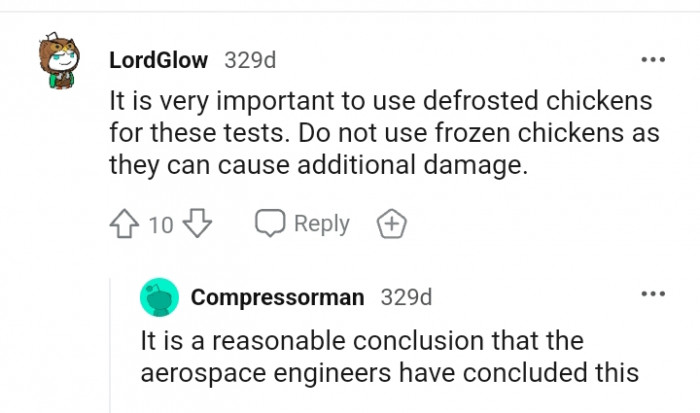 Reddit
Reddit
That'd be a strong insult to the turkey
 Reddit
Reddit
The UK's Royal Aircraft Establishment constructed a chicken gun in 1961. This cannon was frequently used until 2016 when it was transferred to the Canada Aviation and Space Museum and two more contemporary weapons took its place.
The use of a modular barrel allows the replacements to more easily accept birds of various sizes.
Tell us your thoughts about this Chicken Gun story in the comments below.






